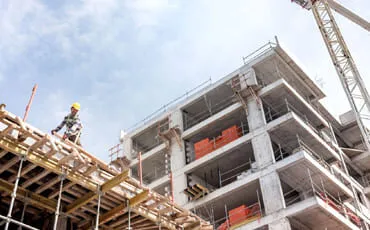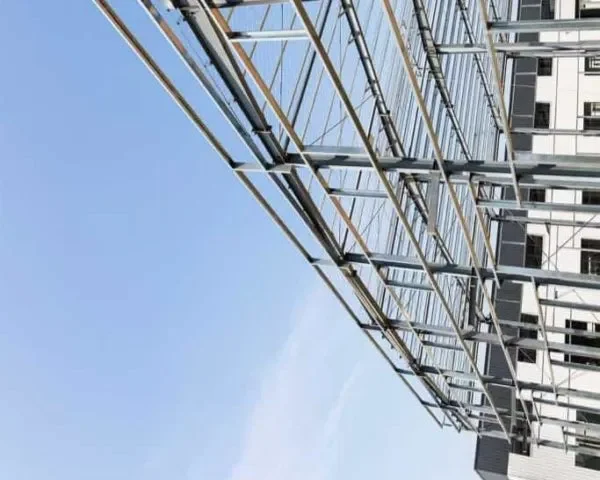If you are considering doing structural works to a leasehold property as a leaseholder, it is important to familiarize yourself with your rights and responsibilities. It seems that most leaseholders have to navigate through a myriad of rules within legislation before being able to proceed with any works to alter their homes. With this guide, I hope to assist beginners in the UK leasehold system in navigating this complex challenge.
Table of Contents
What is a Leasehold Property?
What Changes Can You Make to a Leasehold Property?
Can You Make Leasehold Alterations Without Consent?
What is a Structural Alteration or Addition?
What if My Landlord Wants to Make Alterations?

What is a Leasehold Property?
A leasehold is a property in which you may occupy the nest for a certain period as outlined within a lease agreement, but the freehold – the land on which the property sits – is under the ownership of another individual or organization. In a leasehold, you have rights of occupancy, but the ownership rights for the land are not your own.
Most often, leaseholders pay ground rent to their freeholder, and incur service charges (ongoing expenses) for things such as maintenance and repairs; and they are often subject to limitations on what they can alter inside the property. One common clause restricts what structural changes can be made.
What Changes Can You Make to a Leasehold Property?
As a leaseholder, you have greater flexibility to adapt the property to your needs than an owner-occupier under what’s known as a freehold. However, how far you can go will depend entirely on the wording of your lease. Your tenancy document will list out any alterations and additions you can make, including:
Cosmetic Upgrades: Painting walls, changing flooring, or upgrading kitchen and bathroom fixtures are all cosmetic upgrades that require no landlord approval and do not adversely affect the built structure, or the physical integrity of the property.
Non-structural alterations: Fitting shelves, built-in furniture or a similar measure to a rented home is usually legal without written consent – though you’ll want to check your lease agreement to see what is permitted and if your landlord places some restrictions on what you can and can’t do.
Of course, always check your lease to find out your exact rights and limitations regarding changes to your leasehold property.
Can You Make Leasehold Alterations Without Consent?
In general, almost all leaseholds require your landlord’s permission before undertaking major alterations to the property. What counts as a major alteration depends, of course, on the particular lease, but can include anything which changes the layout and structure of the property. Failing to get your landlord’s permission can have serious legal consequences, including the possible termination of your tenancy, or the obligation to put the property back to its original condition.
While sometimes, it could be reasonable for a landlord to refuse consent, always try to give them as much notice as possible about what you plan to do and ensure that any correspondence is kept in writing. And check what your lease says about alterations in case you mistakenly assume that you have permission for something.

What is a Structural Alteration or Addition?
Structural Alterations are structural changes which can affect the integrity or configuration of the property such as:
Removing or Altering Load-Bearing Walls: This could severely compromise the integrity of your building, and often needs to be checked by a professional beforehand.
Additions or Balconies: Any adaption that increases the footprint of the property or alters the external look requires consent, along with abiding by local building code requirements.
Roof mods: These structural alterations involve changes to the roof itself, such as erecting a dormer or altering the roof pitch.
Because they might involve major structural changes, any of these should be carried out by professionals after consultation with architects and structural engineers who can comply at least with the safety standards – if not the building standards – of the country of installation.
What if My Landlord Wants to Make Alterations?
If your landlord wants to make changes to the property, under most circumstances they are expected to notify you – especially if the alterations relate to your dwelling unit. This includes detailing what work will be done, when it will be done, and how it might affect your tenancy.
In turn, landlords are also bound by the legal aspects of the lease and, in some circumstances, will request your agreement if what they seek to do has a bearing on your rights as a leaseholder. It’s important to keep the landlord up to date about any issues affecting your property.
Further Information
Before proceeding with any structural alterations, it’s advisable to take the following steps:
Check Your Lease: Make sure you know the exact details of what is allowed and what isn’t, before you invest any money in modifications.
Take expert advice: The net’s a useful source of chat among DIY-ers and experts, but it should never replace professional advice. Find a solicitor or property expert who can explain what your rights are, and make sure you are complying with the relevant laws.
Get on Your Landlord’s Good Side: Having a good working relationship with your landlord could help the negotiations go more smoothly. By keeping the lines of communication open, you can decrease the chances that modifications will be misinterpreted by your landlord and ensure that the changes are dealt with as a team.
Conclusion
A leaseholder who has an understanding of the leasehold structure is better equipped to know when to challenge the freeholder or the managing agent, and to seek greater benefits from the property. Knowing your rights, as well as your responsibilities is the first step in managing a leasehold property well. It also helps in making key decisions, such as whether to give the go-ahead for a structural alteration or if you think the structural alteration is excessive.




![Process of Designing a Footing Foundation [2024-2025]](https://www.rgengineers.co.uk/wp-content/uploads/2023/10/exterior-design.jpg)
